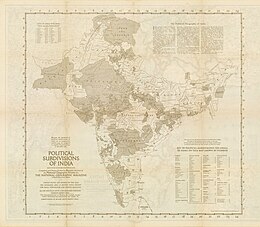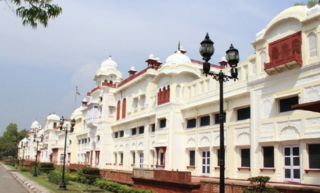
Patiala is a city in southeastern Punjab, northwestern India. It is the fourth largest city in the state and is the administrative capital of Patiala district. Patiala is located around the Qila Mubarak constructed by the Sidhu Jat Sikh chieftain Ala Singh, who founded the royal dynasty of Patiala State in 1763, and after whom the city is named.

Jindo district is one of the 22 districts of Haryana state in northern India. Jind town is the administrative headquarters of the district. It is part of Hisar Division and was created in 1966.
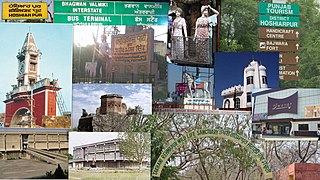
Hoshiarpur is a city and a municipal corporation in Hoshiarpur district in the Doaba region of the Indian state of Punjab. It was founded, according to tradition, during the early part of the fourteenth century. In 1809, it was occupied by the forces of Maharaja Karanvir Singh and was united into the greater state of Punjab in 1849.

Patiala district is one of the twenty three districts in the state of Punjab in north-west India.

The Maharaja of Patiala was the title of a Maharaja in India and the ruler of the princely state of Patiala, a state in British India. The first Maharaja of Patiala was Baba Ala Singh (1695–1765).

Maharaja Sir Bhupinder Singh, was an Indian royal and cricket player. He was the ruling Maharaja of the princely state of Patiala in British India from 1900 to 1938. He was born in a Sidhu royal Jat Sikh family.

Kalsia was a princely state in Punjab, British India, one of the former Cis-Sutlej states. It was founded by Gurbaksh Singh Kalsia in 1760. After India's independence, it was included in PEPSU and later in the Indian East Punjab after the States Reorganisation Act, 1956. The area of Kalsia is now located in the modern day Indian states of Punjab and Haryana. In 1940 the population of Kalsia was 67,393. Kalsia was ruled by Jat Sikhs.

Yadavindra Singh was the ninth and last ruling Maharaja of Patiala from 1938 to 1971. He was also a diplomat, sports administrator and former cricketer who played in one Test in 1934.
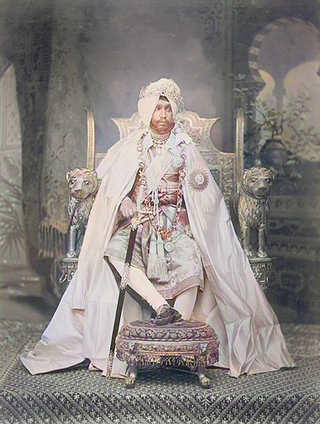
Sir Rajinder Singh was the Maharaja of the princely state of Patiala from 1876 to 1900. In 1897, he was awarded the Grand Cross of the Star of India for his bravery, by the colonial government. Described as "the first reigning Prince to blend the elements of the English gentleman and Indian potentate."

Sirmur was an independent kingdom in India, founded in 1616, located in the region that is now the Sirmaur district of Himachal Pradesh. The state was also known as Nahan, after its main city, Nahan. The state ranked predominant amongst the Punjab hill States. It had an area of 4,039 km2 and a revenue of 300,000 rupees in 1891.

Moti Bagh Palace is a palace in Patiala, also known as Pearl Garden Palace. The word "Moti" means "pearl", and "Bagh" means "garden". The Palace was built by Maharaja Narinder Singh, the great-grandfather of Maharaja Bhupinder Singh, in 1847, at a cost of five lakhs of rupees. The Old Moti Bagh Palace and New Moti Bagh Palace were built respectively by Maharaja Narinder Singh and Maharaja Yadavindra Singh.

The Phulkian Dynasty of Maharajas or sardars were Jat-Sikh rulers and aristocrats in the Punjab region of India. They governed the states of Faridkot, Jind, Nabha, Malaudh, Bhadaur, Badrukhan and Patiala, allying themselves with the British Raj as per the Cis-Sutlej treaty. The Phulkain sardars are the descendants of Rawal Jaisal of Jaisalmer, who migrated to present day Malwa region of Punjab. The Phulkian dynasty claimed descent from Rawal Jaisal, the Bhati Rajput founder of Jaisalmer.

Nabha State, with its capital at Nabha, was one of the Phulkian princely states of Punjab during the British Raj in India. Nabha was ruled by Jat Sikhs of the Sidhu clan.

Faridkot State was a self-governing princely state of Punjab outside British India during the British Raj period in the Indian sub-continent until Indian independence.

Mehtab Kaur, was the second wife of the ninth and the last Maharaja of Patiala Yadavindra Singh (1913–1974). She was the mother of Amarinder Singh, the former Chief Minister of Punjab. Had it not been for the erstwhile Indian princely families being stripped of their titles in 1971, upon the death of her husband she would have been considered Rajmata, and in popular usage is commonly referred to as such.
Sardar Nanu Singh Saini was a Sikh army general and a well-known jagirdar in Phulkian riyasat. He was a close associate of Maharaja Ala Singh who founded the Patiala state in 1753 AD.
It is estimated that the city of Lahore, Pakistan, has a Muslim majority with 94.7% and Christian minority constitute 5.1% of the population and rest Sikhs and Hindus constitute the remaining 0.2%. There is also a small but longstanding Zoroastrian community.

Jind State was a princely state located in the Punjab region of north-western India. The state was 3,260 km2 (1,260 sq mi) in area and its annual income was Rs.3,000,000 in the 1940s. Jind was founded and ruled by Jat Sikh rulers of Sidhu clan.
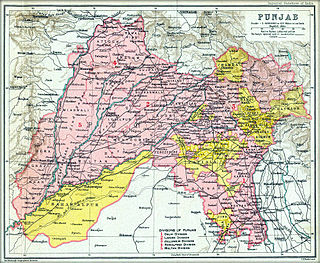
The State of Malerkotla or Maler Kotla was established by Maharaja of Parmar Rajputs, is a princely state in the Punjab region since the era of British India. Which was taken over by Sarwani and Lodi Pashtun dynasty from Afghanistan, and named Malerkotla as capital.

Ala Singh (1691–1765) was the first king of the princely state of Patiala.


